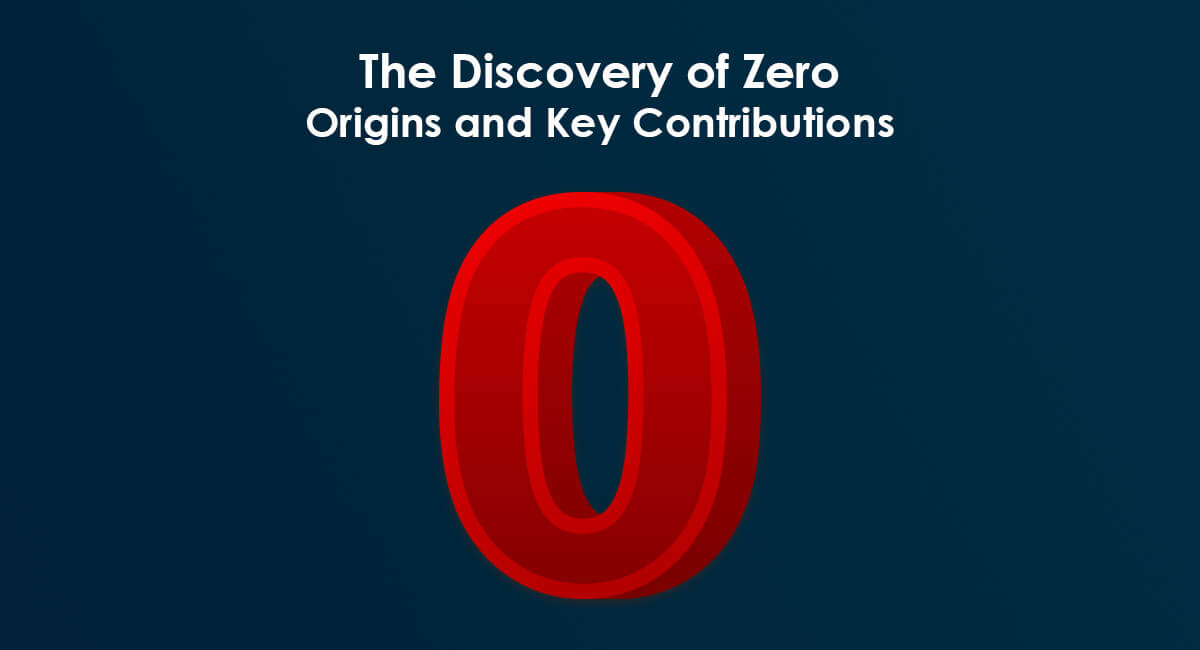

Introduction
Origins of Zero
Key Contributions and Cultural Exchange
Renaissance and Beyond
Conclusion
In the realm of mathematics, few concepts possess the enigmatic allure of zero. It is not merely a digit but a gateway to profound mathematical insights, enabling the development of complex systems and reshaping our understanding of the universe. Yet, the journey to the discovery of zero was anything but straightforward. Exploring its beginnings reveals an enthralling story of intellectual curiosity, cross-cultural interchange, and ground-breaking contributions from millennia-old civilizations.
Join me as we unravel the mysteries behind the discovery of zero, exploring its origins and the key figures who propelled its evolution.
The concept of zero emerges in various forms across different civilizations throughout history. Its earliest traces can be found in ancient Mesopotamia, where scribes utilized a placeholder symbol to denote the absence of a quantity in numerical systems. This placeholder, resembling a small, hollow circle, laid the groundwork for the development of zero as a numerical entity. However, it lacked the abstract mathematical significance that zero embodies today.
The journey of zero continued across the vast expanse of human civilization, reaching ancient India around the 5th century CE. Indian mathematicians, notably Brahmagupta, played a pivotal role in elevating zero to a foundational element of arithmetic and algebra. Brahmagupta's seminal work, the Brahmasphutasiddhanta, introduced the rules governing arithmetic operations involving zero, such as addition, subtraction, and multiplication. He also addressed the enigmatic division by zero conundrum, laying down principles that influenced subsequent mathematical discourse.
Aryabhata, an ancient Indian mathematician and astronomer, made significant contributions to mathematics and astronomy during the 5th century CE. While Aryabhata did not explicitly discover zero, he did play a crucial role in the development of mathematical concepts that laid the groundwork for the understanding and usage of zero in Indian mathematics.
In his seminal work, the "Aryabhatiya," Aryabhata utilized a place-value system and introduced the concept of "kha" to represent an empty place in numerical notation. Although "kha" is not precisely the same as zero in the modern sense, it served as a placeholder and laid the foundation for the evolution of zero as a numerical digit.
Aryabhata's work influenced subsequent Indian mathematicians, including Brahmagupta, who further refined the concept of zero and its mathematical implications. Brahmagupta's treatise, the "Brahmasphutasiddhanta," provided explicit rules for arithmetic operations involving zero, thereby solidifying its status as a fundamental numerical entity.
While Aryabhata's contributions were crucial in the development of Indian mathematics, it was Brahmagupta who provided more detailed insights into the concept and mathematical properties of zero. Thus, while Aryabhata did not discover zero in the modern sense, his work laid essential groundwork for its subsequent development in Indian mathematics.
The transmission of mathematical knowledge between civilizations facilitated the evolution of zero and its integration into diverse mathematical frameworks. The Arab scholars of the Islamic Golden Age served as custodians of this intellectual exchange, preserving and augmenting the mathematical heritage inherited from ancient civilizations.
One of the towering figures in this narrative is Muhammad ibn Musa al-Khwarizmi, whose treatise "Al-Kitab al-Mukhtasar fi Hisab al-Jabr wal-Muqabala" (The Compendious Book on Calculation by Completion and Balancing) introduced algebraic methods, including the systematic use of zero as a placeholder and as a symbol of nothingness. Al-Khwarizmi's work not only disseminated Indian numeral systems but also laid the groundwork for algebra as a distinct branch of mathematics.
The influence of Islamic scholars extended far beyond the boundaries of the Arab world, permeating into medieval Europe during the Middle Ages. Through translations of Arabic texts, European mathematicians encountered the revolutionary concepts of zero and positional notation, heralding a paradigm shift in mathematical thought.
The Renaissance period witnessed a resurgence of interest in classical knowledge, spurring advancements in various fields, including mathematics. Figures like Leonardo Fibonacci played a crucial role in popularizing Hindu-Arabic numerals in Europe through his influential treatise "Liber Abaci" (The Book of Calculation). Fibonacci's exposition of the decimal system, with zero as a linchpin, revolutionized commercial arithmetic and paved the way for modern mathematics.
The journey of zero from its humble origins to its ubiquitous presence in contemporary mathematics epitomizes humanity's relentless pursuit of knowledge and understanding. Its transcendence from a mere placeholder to a foundational concept underpinning countless mathematical principles reflects the collective ingenuity of civilizations across time and space.
In conclusion, the discovery of zero stands as a testament to the indomitable spirit of human inquiry. From its nascent origins in ancient civilizations to its pivotal role in shaping modern mathematics, zero has left an indelible mark on the intellectual landscape of humanity. Through cultural exchange, scholarly discourse, and profound insights, mathematicians across epochs have unraveled the mysteries of zero, illuminating the path towards ever greater mathematical enlightenment. As we continue to explore the depths of mathematical knowledge, let us not forget the humble origins and remarkable journey of this seemingly simple yet profoundly transformative concept - zero.
Leave a Reply
Your email address will not be published. Required fields are marked *
Comments
No comments available